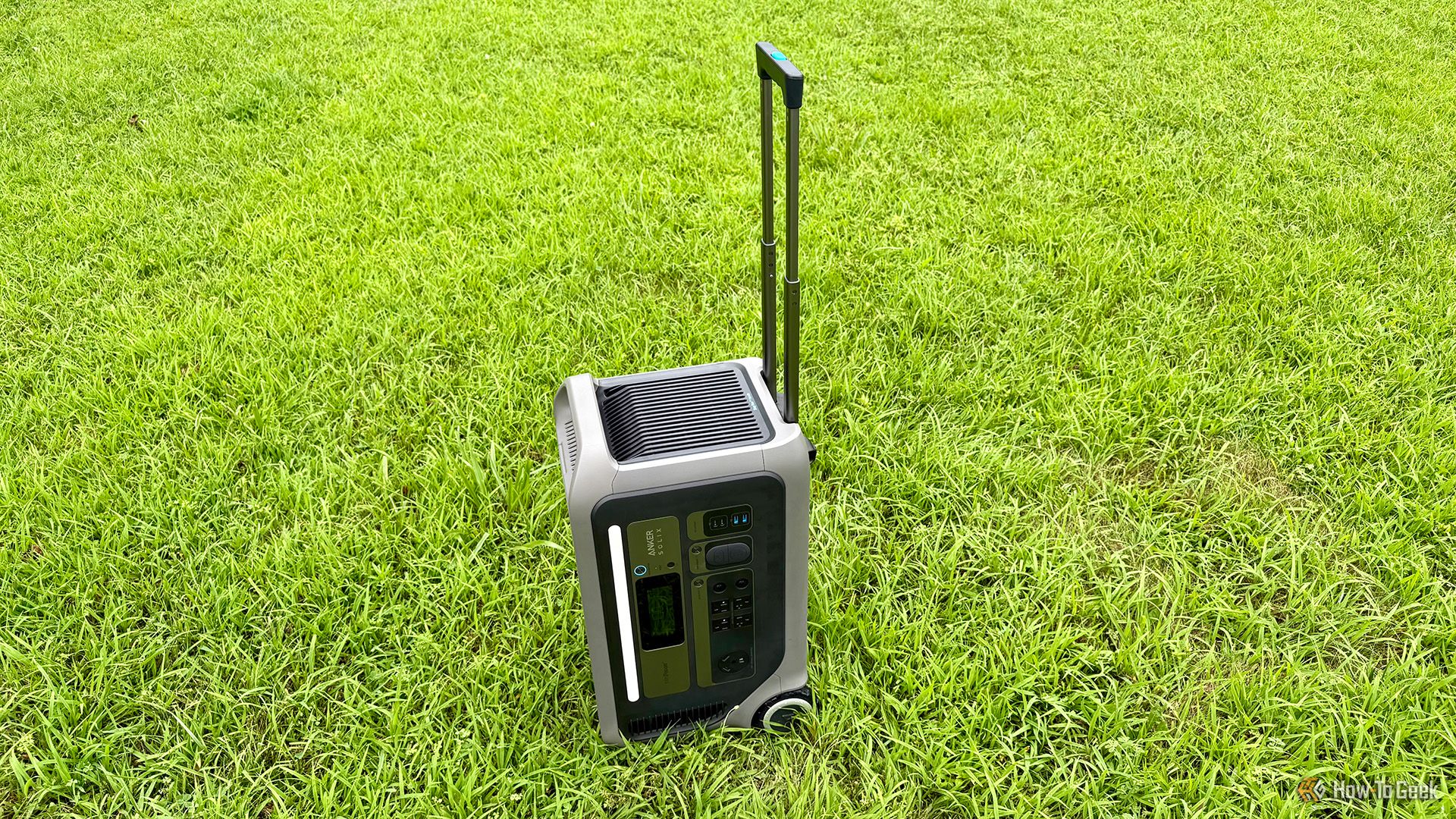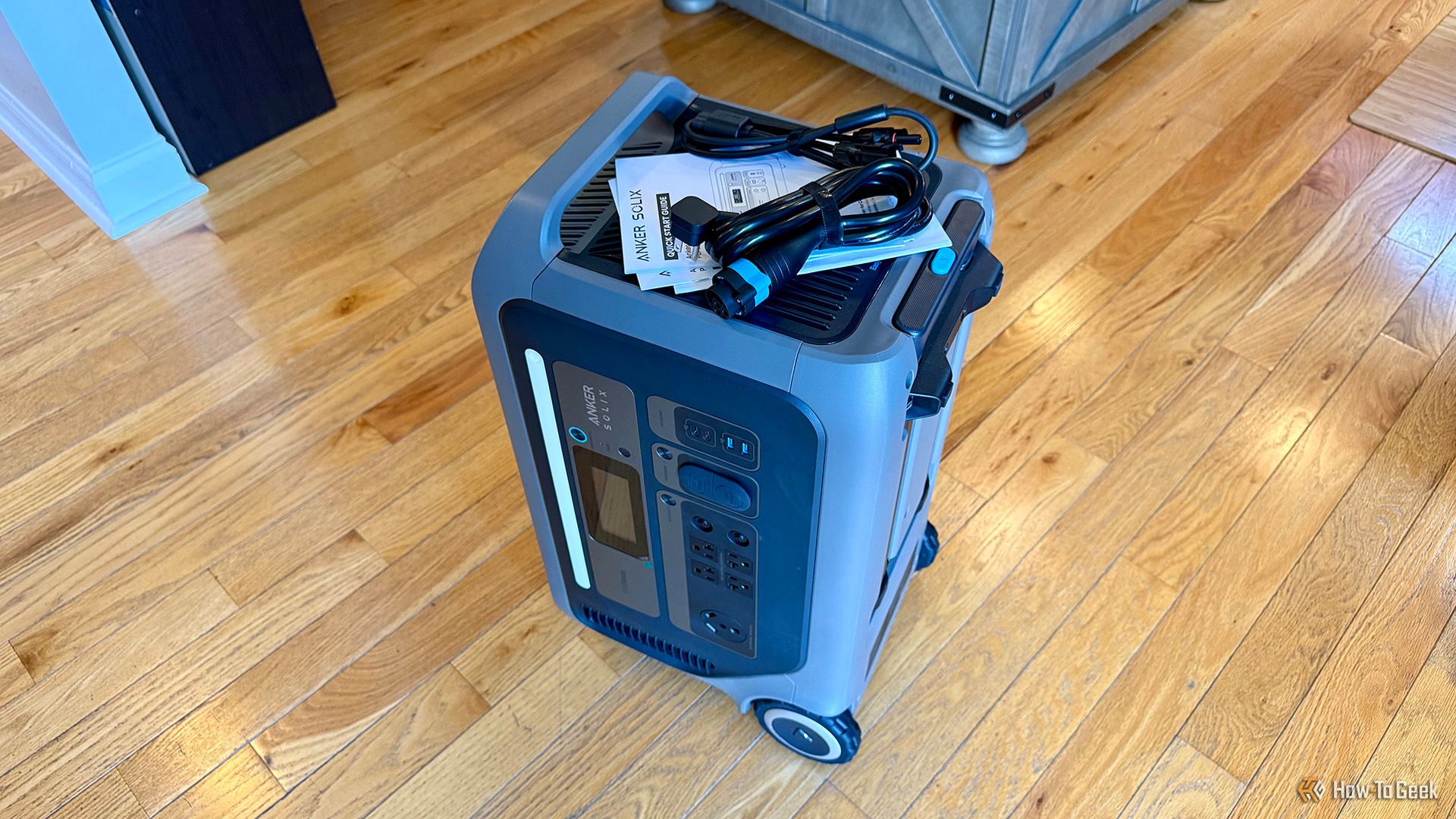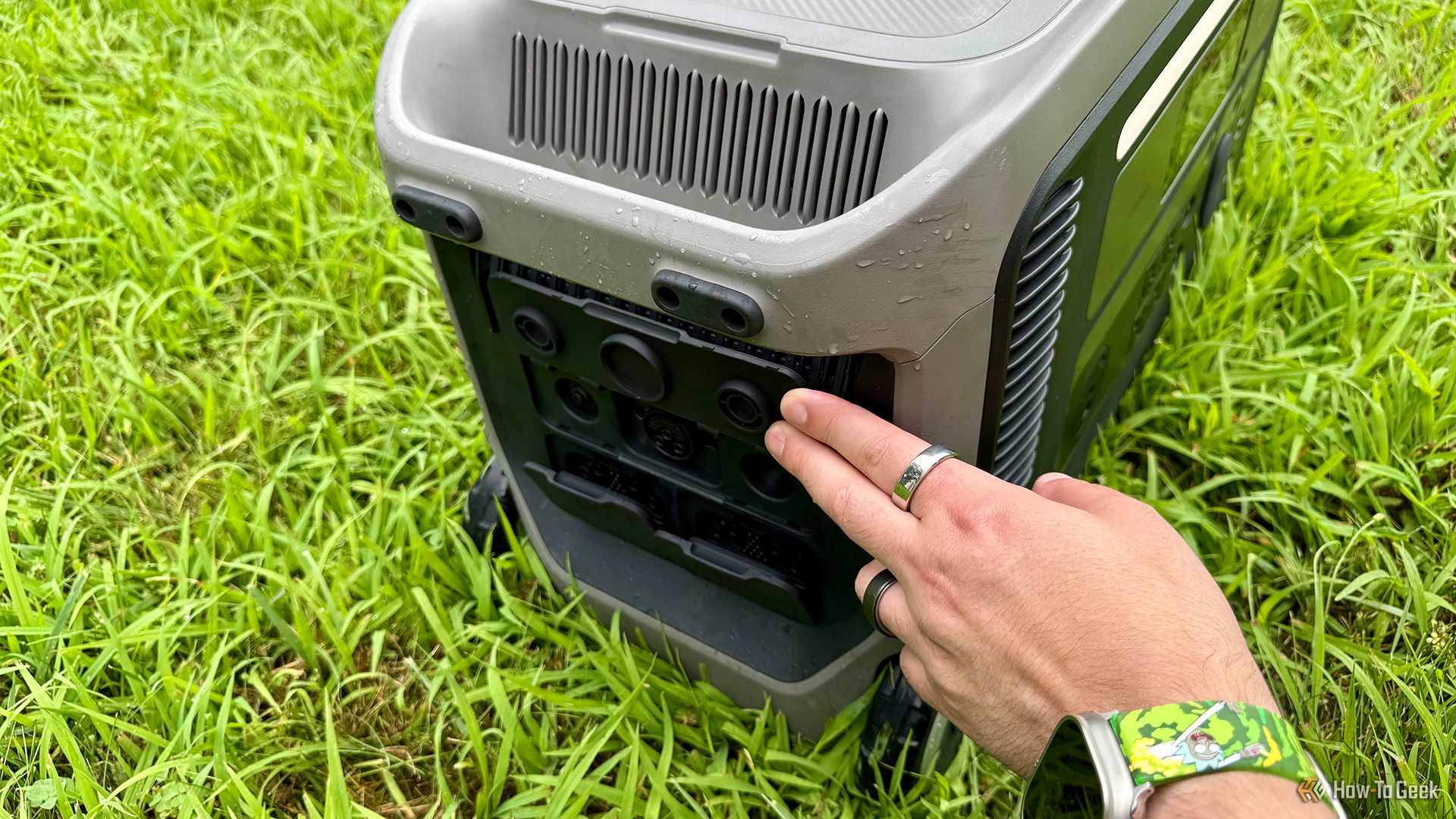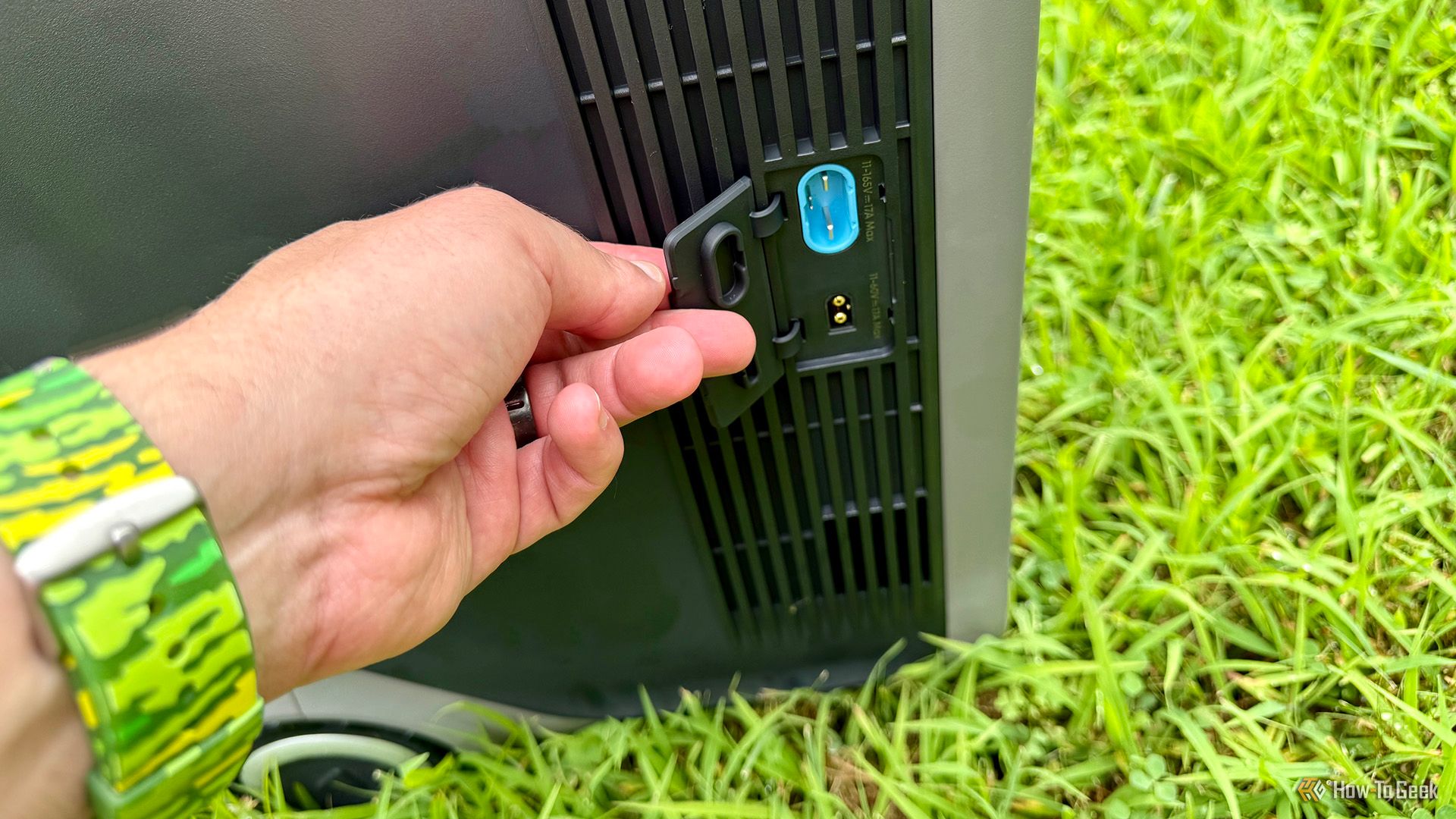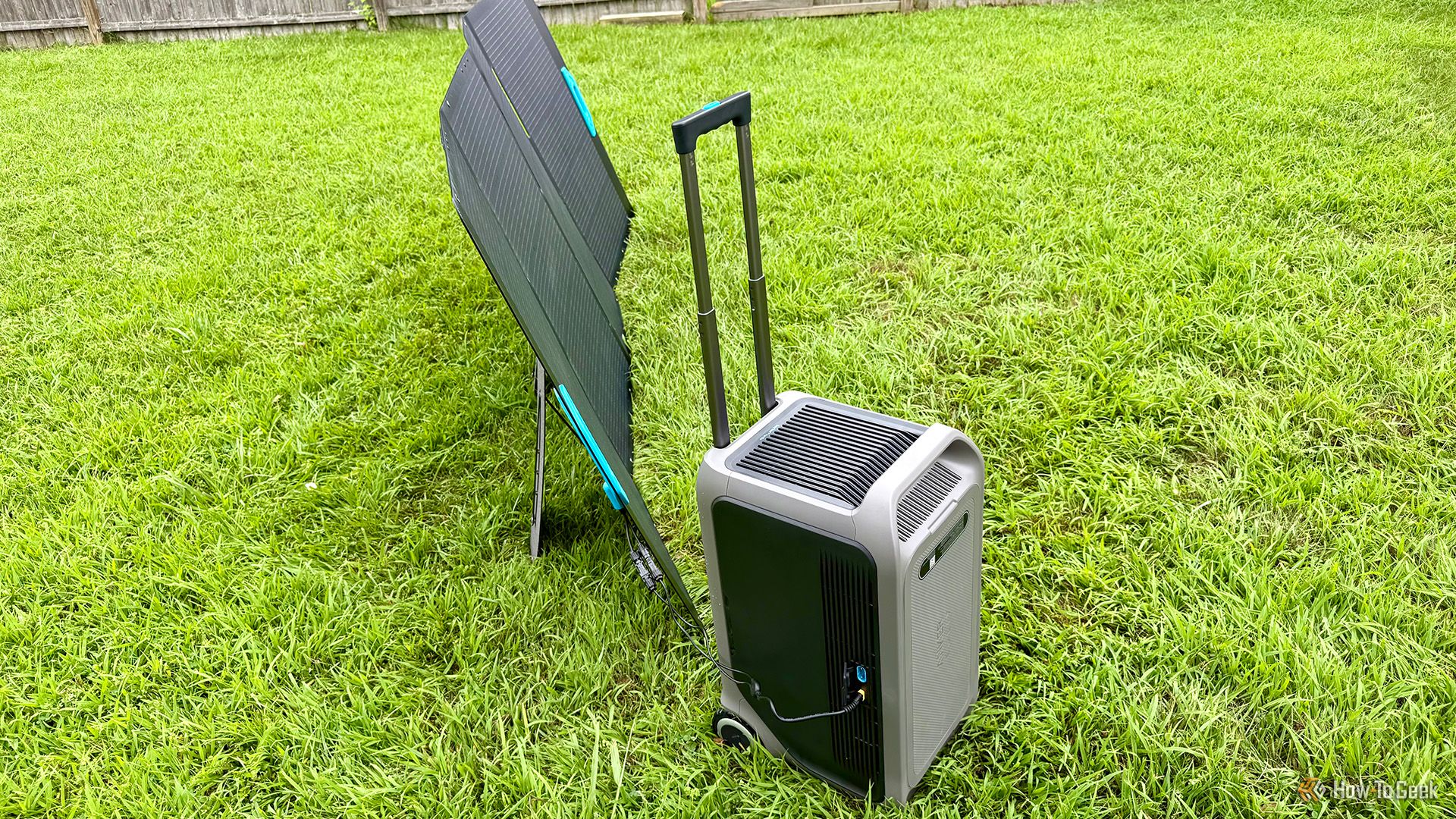If you own a home, power outages, occasional or otherwise, are a way of life. The Anker SOLIX F3000 Portable Power Station provides a home backup for short-term power outages, but is versatile enough, and just portable enough, for so much more.
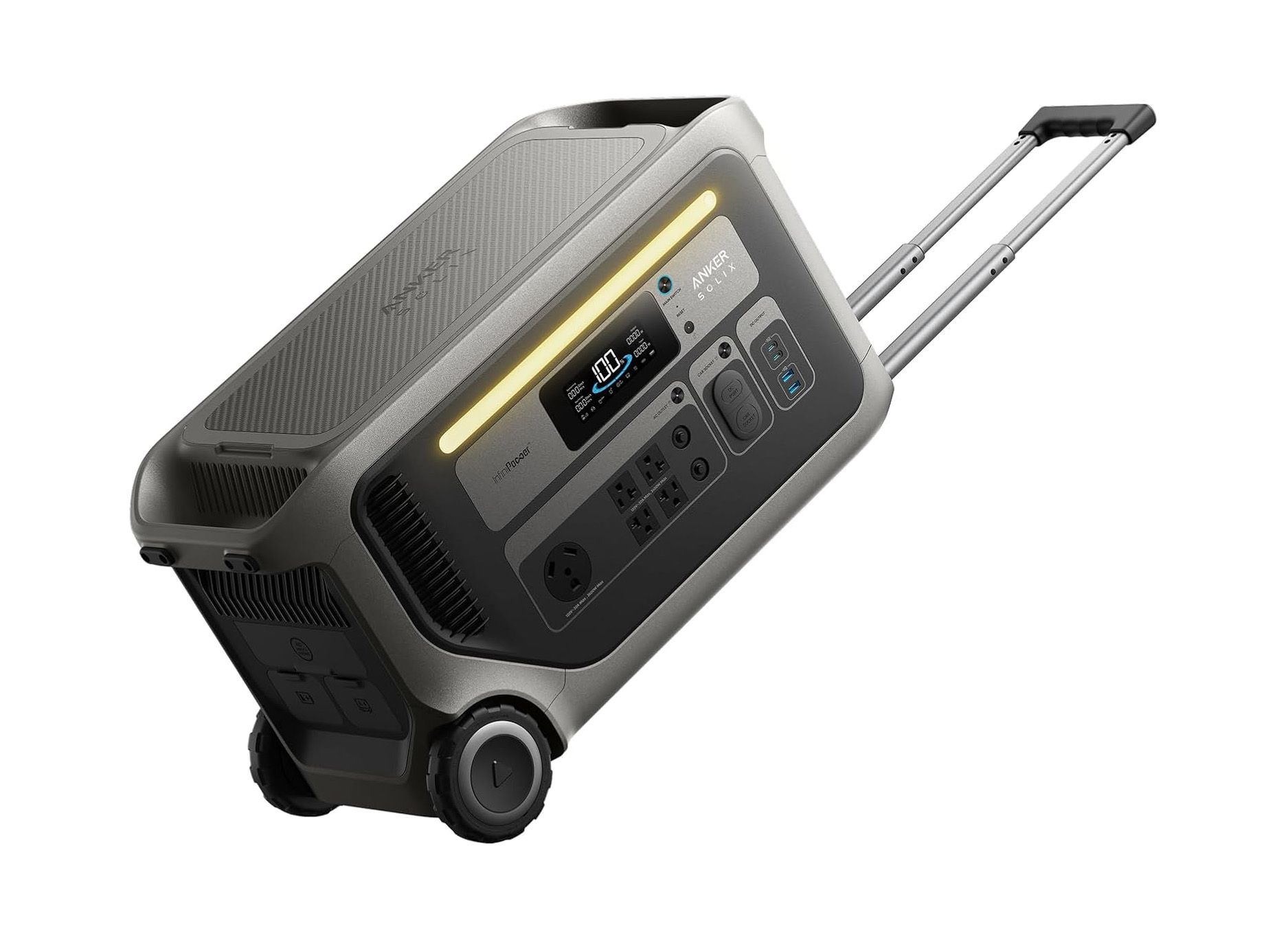
- Dimensions
-
25.6 x 11.8 x 14.8 in
- Weight
-
91.5 lbs
- AC Input rating
-
120V~ 30A Max, 3,600W Max, 60Hz, L+N+PE
- DC Output ports
-
13.4V⎓30A
The Anker SOLIX F3000 Portable Power Station has incredible versatility for everything from backup power to outdoor adventures. It’s not the easiest to transport, but its expandable feature set makes up for it.
- Can power almost anything, including appliances
- Plenty of input and output options
- Versatile charging and long battery life
- Transportable
- Awkward to move
- Port covers are hard to put back in place
Price and Availability
The Anker SOLIX F3000 Portable Power Station is available from Amazon, Best Buy, and direct from Anker for $1900. Included in the box is the power station, AC charging cable, high-voltage solar charging cable, and paperwork. Additional bundles and accessories, including solar panels, expansion batteries, and smart meters, are also available.
- Dimensions
-
25.6 x 11.8 x 14.8 in
- Weight
-
91.5 lbs
- Battery type
-
LFP
- Battery Capacity
-
51.2V/60Ah / 3,072Wh
- AC Input rating
-
120V~ 30A Max, 3,600W Max, 60Hz, L+N+PE
- AC Output Rating
-
120V~ 30A Max, 3,600W Max, 60Hz, L+N+PE
- DC Output ports
-
13.4V⎓30A
- Solar input rating
-
11-165V⎓17A Max, 1,600W
- USB Ports
-
A x 2, C x 2
- Display
-
LCD
- Expandable
-
Yes
- Lights
-
Ambient
Design and Functionality
Although Anker’s SOLIX F3000 looks like a smaller, more compact version of the company’s EverFrost Dual-Zone Powered Cooler 50, it actually weighs over 30 pounds more. Its 91.5-pound weight feels remarkably dense in its 25.6 x 11.8 x 14.8-inch body, much of which seems dedicated to its impressive 3,072Wh Lithium Iron Phosphate (LiFePO4) batteries, which have a 10-year lifespan and maximum output of 3,600W. This is more than enough watts to power something like a major appliance and several small electronic devices at the same time.
Similar to a rolling suitcase, the SOLIX F3000’s handles and wheels help with transportability, but this is not the type of power station you’re likely to grab and go like with Anker’s SOLIX C300 DC. Of course, the SOLIX F3000 is also far more powerful, able to do everything that something like the SOLIX C300 DC can, but also power heavy-duty items like appliances and small RVs or campers for tens of hours.
The SOLIX F3000 can be placed either vertically or horizontally depending upon your preferences for storage or usage. On the right of the unit are most of its controls, ports, and LCD screen.
Above the LCD screen is an ambient light with associated power button, which provides just enough nighttime illumination to better see the primary ports and a little of the area facing the power station. To the right of the LCD screen is the main power button, pinhole reset, and IoT button, the latter of which activates Bluetooth and Wi-Fi for pairing with your smartphone or tablet and the Anker app.
Below the LCD screen, starting from the left, is a TT-30R AC output port typically used for powering RV appliances, four NEMA 5-2-R AC output ports (standard North American power sockets), two overload protection buttons, and an AC outlet power button. While it’s handy having the four AC outlets with two facing up and two facing down, they’re grouped tightly together, so that can be a problem if you have a bulky power brick that would block one or more of the other outlets.
To the right of the AC output ports are a car socket port and car socket power button, as well as an Anderson port, which is good for safely and securely connecting to high-power electrical devices like auxiliary batteries in 4WD vehicles or off-grid solar systems. To the right of the car socket port are two USB-C and two USB-A ports, with the former having a maximum output of 20V/5A and 100W per port and the latter having a maximum output of 5V/2.4A and 12W per port.
On the wheel side of the SOLIX F3000 is an AC input and output port, as well as an expansion battery port. On the bottom right is a DC input port. Finally, on the left side of the SOLIX F3000 is a High-PV input port, as well as a Low-PV input port, each of which is good for receiving electricity from solar panels, even simultaneously, and ensuring a wide range of compatibility. As with the other port covers, I found these a bit clumsy to always easily push back into place.
Before first use, the SOLIX F3000 needs to be activated by charging it. Because of the versatility of the unit, you can not only charge over AC with a standard wall outlet, but also charge via EV station, a gas generator, DC, or via solar panels.
Once charged, you can optionally connect over Bluetooth or Wi-Fi with the Anker app, which is available for Apple iOS 11.0 or above devices, or Android 5.0 or above devices. While you can use the power station without the app, and its LCD screen does provide a plethora of information, you’d miss out on easy access to configuration and usage data for each port, as well as remote operation. In fact, when first connecting to the SOLIX F3000, the app asks you to select a scene, either standalone use or power station use. For the former, you can use the SOLIX F3000 as a portable, standalone power supply to charge devices through its various ports, as well as to charge an electric vehicle if you supply the necessary converter. For the latter, you can connect the SOLIX F3000 to your home grid, allowing the power station to back up power and recycle energy.
Use Cases and Accessories
Although primarily meant for heavy-duty use cases like generator backup or being your primary power station when camping, it’s important not to overlook the SOLIX F3000’s versatility in everyday situations like household power outages. For instance, it can power an average 600 – 800-watt refrigerator for up to 40 hours. If you live in an area with regular power outages, that can save you from having to spend hundreds of dollars or more on spoiled groceries.
One use case I particularly enjoy is having the SOLIX F3000 in my backyard for when I want to use a power or garden tool. For instance, I can connect my power washer to the SOLIX F3000 and only have to worry about being near one of my water hoses rather than also near one of my outdoor power outlets. Similarly, for a worksite, the SOLIX F3000 can be a valued helper when there might not be enough power to go around, and is easily able to handle high-draw tools like a power saw.
One of the superpowers of the SOLIX F3000 is its expandability. Not only can it connect to most devices to give or take power, its battery capacity can also be multiplied. This multiplication can be important when its native capabilities aren’t quite enough to power what you need, particularly when it comes to multiple large appliances. For instance, the SOLIX F3000 can power an air conditioner that might require 1,600W to start and then 1,050W when running, which would use about a third of the available power output. Instead, by adding a BP3000 Expansion Battery ($1900), which stacks on top of the power station, you can double the capacity to 6,144Wh. Add a second battery on top of the first and you get 9,216Wh. With a third and final battery, you get 12,288Wh. While you’re again paying the original price of the SOLIX F3000 with each additional battery added, for perspective, you’ll typically need 5,000 to 8,000 watts to power everything in an average home, so that’s an incredible amount of potential capacity should you ever find you need it.
Even crazier, you can connect two SOLIX F3000’s with the Anker SOLIX Double Voltage Hub ($200) and then add up to three batteries on top of each. That gets you a staggering 24,576Wh.
The addition of one or two solar panels, like the Anker SOLIX PS400 Portable Solar Panel ($900), with the SOLIX F3000, can charge the base unit in fewer than two hours, making it an ideal outdoor companion. Even more interesting, this setup can also be used to provide up to 1,800W of power output to your home when the power station is connected to an Anker SOLIX Bi-Directional Inlet Box ($200). Through the app, you can then set a time-of-use mode where, during peak hours, household loads are powered by solar and stored energy, and then, during off-peak hours like at night, the grid can in turn recharge the SOLIX F3000. Of course, even without such a box, you can just plug high power consumption appliances directly into the SOLIX F3000 and let the solar panel keep it off-grid most of the day.
While it’s impossible to cover every possible use case or optional add-on, I think it’s clear why something like the SOLIX F3000 can prove so valuable. The only real negative is that even though it’s genuinely transportable, I wouldn’t exactly call it portable. The extendable handle helps somewhat, but the center of gravity for the weight distribution is not the best, and of course, that’s not even counting the times I had to lift it up and down stairs. With that said, I’m not sure I would trade off any of its capabilities or features for easier mobility. And even though it’s a bit of a challenge to move, I had no issues with the build quality. This is a sleek, well-designed, and solid unit whose fans remain surprisingly quiet even when under heavy load.
Should You Buy the Anker SOLIX F3000 Portable Power Station?
Even at its full retail price, the Anker SOLIX F3000 Portable Power Station is surprisingly affordable given its remarkable versatility. It can power, or be powered by, almost anything, although doing so may require additional purchases.
It’s fun just trying to think up use cases for the SOLIX F3000 beyond just power backup, although that’s compelling enough on its own. The fact that it’s transportable, at least with some muscle applied to move its dense, somewhat unbalanced weight, is a huge plus. While even Anker itself offers smaller and larger power station models that are more portable or more powerful, respectively, this might just be the ideal mix of both for most users. It’s simple enough to use in a variety of applications, even if it’s your first power station, yet also expandable enough to cover most future needs, like being paired with a good solar panel and bi-directional inlet box to lower your household electric bill.

- Dimensions
-
25.6 x 11.8 x 14.8 in
- Weight
-
91.5 lbs
- AC Input rating
-
120V~ 30A Max, 3,600W Max, 60Hz, L+N+PE
- DC Output ports
-
13.4V⎓30A
The Anker SOLIX F3000 Portable Power Station has incredible versatility for everything from backup power to outdoor adventures. It’s not the easiest to transport, but its expandable feature set makes up for it.
